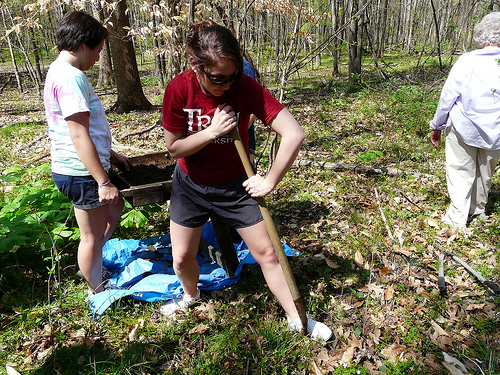
Major General Eddy Spurgin conducts key leader engagements with Iraqi military senior leaders in southern Iraq.
When on duty, Major General Eddy M. Spurgin is the commanding general for the 36th Infantry Division of the Texas Army National Guard, but when stateside, he serves as the district conservationist for USDA’s Natural Resources Conservation Service (NRCS) in Big Spring, Texas. Read more »
Last week was monumental for American farmers. Under the new U.S.-Korea trade agreement, two-thirds of the tariffs imposed on U.S. food and agricultural products exported to South Korea are being eliminated. That includes wheat, corn, soybeans for crushing, whey for feed use, hides and skins, cotton, cherries, pistachios, almonds, orange juice, grape juice, and wine.
Over the next few years, as additional barriers fall and more U.S. businesses market products to Korea’s expanding economy, American agricultural exports should grow by $1.9 billion and help support nearly 16,000 jobs here at home. Read more »
Last spring and summer I had the opportunity to investigate two 1,000 year old archeological sites on a Montgomery County farm. Working with me were archeologists from Troy University and Auburn University at Montgomery, their students and volunteers from the Alabama Archeological Society. Our goal was to determine if the two sites were important to understanding the prehistory of Alabama and should be preserved.

Troy University students conduct shovel tests in an attempt to discover how far the archeological site extends into the woods from the row crop field.
I was on the farm because I am the Cultural Resources Specialist for USDA’s Natural Resources Conservation Service (NRCS) in Alabama. The farmer was planning to implement conservation practices on the land with NRCS’ assistance, so my job was to review the property and planned practices to determine whether we’d be adversely affecting the two archeological sites. Read more »
America’s farmers, ranchers and growers are some of our nation’s greatest assets. Not only do we rely on agriculture for our food, feed, fiber, and fuel, our agricultural producers preserve our environment, and help drive our national economy.
As I travel the country, I often ask folks when they last took a moment to thank or appreciate a farmer. The truth is that we owe a debt of gratitude to the hard working men and women who provide us – and much of the world – with a safe, reliable, affordable, and abundant food supply. Read more »
This post is part of the Science Tuesday feature series on the USDA blog. Check back each week as we showcase stories and news from the USDA’s rich science and research portfolio.
Earlier this month, the National Agricultural Statistics Service (NASS), released the latest count of farms in the United States. The nation has nearly 2.2 million farms, a number that has held pretty steady for the past decade. While this number is important, it doesn’t tell the whole story. Read more »
Today’s reality is that Federal budgets are declining and agencies must address the change without sacrificing quality service to the American people. USDA’s Animal and Plant Health Inspection Service (APHIS), as part of USDA’s Blueprint for Stronger Service, is committed to making the best use of available resources to provide a high level of service for its customers. APHIS is in the process of streamlining both our operations and our processes to benefit producers, stakeholders and the American public. Read more »


